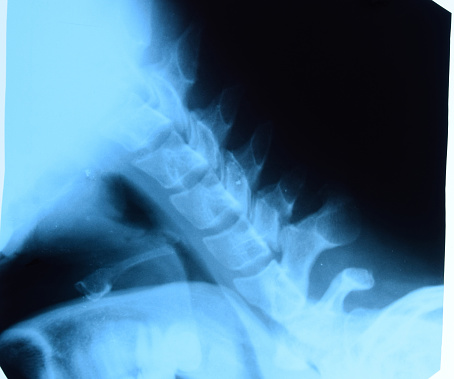Degenerative Disc Disease X-Ray
A degenerative disc disease X-ray will help diagnose the disease. The doctor will use the images to examine your back and assess its range of motion and flexibility. They will also look for signs of nerve root damage. They may also test your muscles and reflexes. They will also ask you to fill out a diagram describing your symptoms.
X-rays can diagnose degenerative disc disease
Degenerative disc disease is a common medical condition characterized by periods of pain that range from nagging discomfort to severe discomfort. The symptoms typically affect the low back, buttocks, neck, and arms. A doctor may recommend X-rays to determine the extent of the condition. A physical exam is also necessary to determine the cause of your symptoms. The doctor will also ask you questions about your medical history, including a history of injury to the spine.
X-rays of the spine are useful for diagnosing disc disease. The x-ray will typically show narrowing between vertebral bodies, which is a common sign of disc degeneration. X-rays can also reveal bone spurs around the vertebral bodies and facet joints, called osteophytes. As disc degeneration progresses, the space between vertebral bodies narrows, which affects the nerve roots.
An MRI or CT scan is also helpful in diagnosing disc herniation or nerve root compression. This exam allows a doctor to examine the anatomy of the bones in the spine and assess the amount of space in the spinal canal and neural foramina. A doctor can use these images to make a proper diagnosis and recommend the appropriate treatment for the patient.
Discs are soft structures that sit between spinal bones. Their function is to absorb pressure during movement. This is similar to shock absorbers. Without them, vertebrae would not be able to absorb the stresses placed on them. Disc degeneration results in spinal instability, which can be disabling.
In addition to X-rays, doctors may also conduct a CT scan to rule out other conditions. This scan can help them exclude spondylolisthesis and pars defect. Additionally, a CT scan can better show the presence of a vacuum disc sign and osteophytes.
MRIs can also be used to diagnose disc disease. These images are useful for assessing the severity of degenerative disc disease. MRIs can also be helpful for the treatment of back pain. MRIs can also show problems in the facet joints, ligaments, and intervertebral disc.
A physician who specializes in treating degenerative disc disease will be able to find the most appropriate treatment for you. Your doctor will be able to determine the best way to treat your degenerative disc disease and provide you with a solution that will help you get back on your feet.
MRIs can also help in the diagnosis of herniated discs. This diagnostic technique allows a doctor to determine the location and size of herniated disc material. MRIs provide more detailed information than conventional radiography. Its contrast distribution provides useful information about the morphology of the disc.
In addition to being an important diagnostic tool, X-rays can help identify the extent of spinal degeneration. If the condition is severe, a doctor may prescribe a neck brace or additional tests.
Symptoms of degenerative disc disease
Degenerative disc disease occurs when the intervertebral discs begin to shrink, compressing nerve roots and causing pain. It also narrows the spinal canal and the forminae, making the spinal cord and nerve roots more vulnerable. The symptoms of degenerative disc disease vary depending on the individual.
An MRI or CT scan can be used to diagnose disc herniation or compression. This test also reveals the anatomy of the spine, including the bones, and space between the vertebrae. It can also reveal tumors and infections, as well as bone changes.
Depending on the location of disc degeneration, a person may experience pain, numbness, or weakness. These symptoms may be localized or radiate to the arms, buttocks, or fingers. In severe cases, the pain may cause difficulty walking. If the condition worsens, you should seek emergency medical care.
Treatment options for degenerative disc disease vary, but the main aim is to reduce pain. Medications such as ibuprofen and muscle relaxants can help alleviate back pain. Other treatments include epidural steroid injections and physical therapy. These therapies target weakened muscle tissue and the affected discs.
In severe cases, bone spurs can form around a disc. They can interfere with the movement of the spinal cord and the surrounding nerves. These pinched nerves can cause weakness and numbness in the arms and legs. A patient suffering from this condition may even experience difficulty with walking or bowel control.
The degenerative process begins in the nucleus pulposus. This gelatinous structure contains collagen and proteoglycans. It also contains chondrocytes that maintain a steady balance of turnover within the nucleus pulposus. These cells also synthesise and break down collagen for the annulus fibrosus. In a healthy intervertebral disc, the nucleus pulposus maintains intradiscal pressure.
Discogenic pain is often experienced in the lower back. However, individuals with this condition may also experience pain in the buttocks or upper thighs. A doctor may order an x-ray to confirm the condition and to rule out other potential causes of pain.
A disc herniation may be acute or chronic. Acute herniation is characterized by pain that worsens when a person stands up and improves when lying down. Chronic herniations may lead to extensive epidural scarring. However, this complication is rare. Only 0.27% of herniated discs will develop this problem.
Treatment options for degenerative disc disease
Treatment options for degenerative disc disease often involve a combination of non-surgical procedures and prescription medications. Physical therapy is one option, and it can reduce pain and inflammation from degenerative disc disease. Physical therapists help patients stretch and strengthen muscles, and teach proper lifting techniques. They also work on increasing the flexibility of the spine. Surgery may also be recommended in cases when conservative treatments fail. Surgical treatments include stabilization surgery and decompression surgery.
Degenerative disc disease can be managed with aerobic exercises and core strengthening exercises, which can help manage symptoms. Regular aerobic exercise helps to promote healthy body weight, improve strength, and improve mobility. If surgery is needed, the doctor may perform a laminectomy or discectomy. These procedures relieve pressure on the spinal cord and nerves. Laminectomy is usually performed in an outpatient setting.
Degenerative disc disease is the natural deterioration of discs in the spine. Discs are small cushions between vertebrae and are made of water, cartilage, and fibrous tissue. As we age, our discs become thinner and flatter, and they no longer offer the cushioning necessary to keep the vertebrae together. This causes pain and can affect your ability to perform simple activities. Surgery may be necessary if your symptoms are persistent.
X-rays are often used to diagnose degenerative disc disease. These tests may reveal narrowed spinal channels, bone spurs, or degenerative changes. In addition, flexion and extension X-rays may reveal problems with spinal stability and range of motion. Other imaging tests may also be ordered, including bone scans, discography, or MRI.
A spinal specialist can provide a proper diagnosis and treatment plan for people suffering from degenerative disc disease. The goal of treatment is to improve your quality of life and decrease your pain while preventing further degeneration. A treatment plan may include pain management therapies or minimally invasive procedures. It is also important to have regular checkups to monitor the progress of the condition. If possible, patients should also try to maintain a good posture and avoid physical activities that may worsen the condition.
The pain caused by degenerative disc disease is usually a sharp pain in the back or neck. It may last for a few days or weeks and can range from mild to severe. Some people with this condition also experience weakness in their legs and arms, which may indicate nerve damage near the spine.
A lumbar discography is one of the most effective diagnostic tools available for degenerative disc disease. It is recommended for patients with lumbar discopathy who have undergone conservative treatment and fail to respond to nonsurgical measures. It is important to note, however, that a CT scan is of limited value in diagnosing degenerative disc disease.



